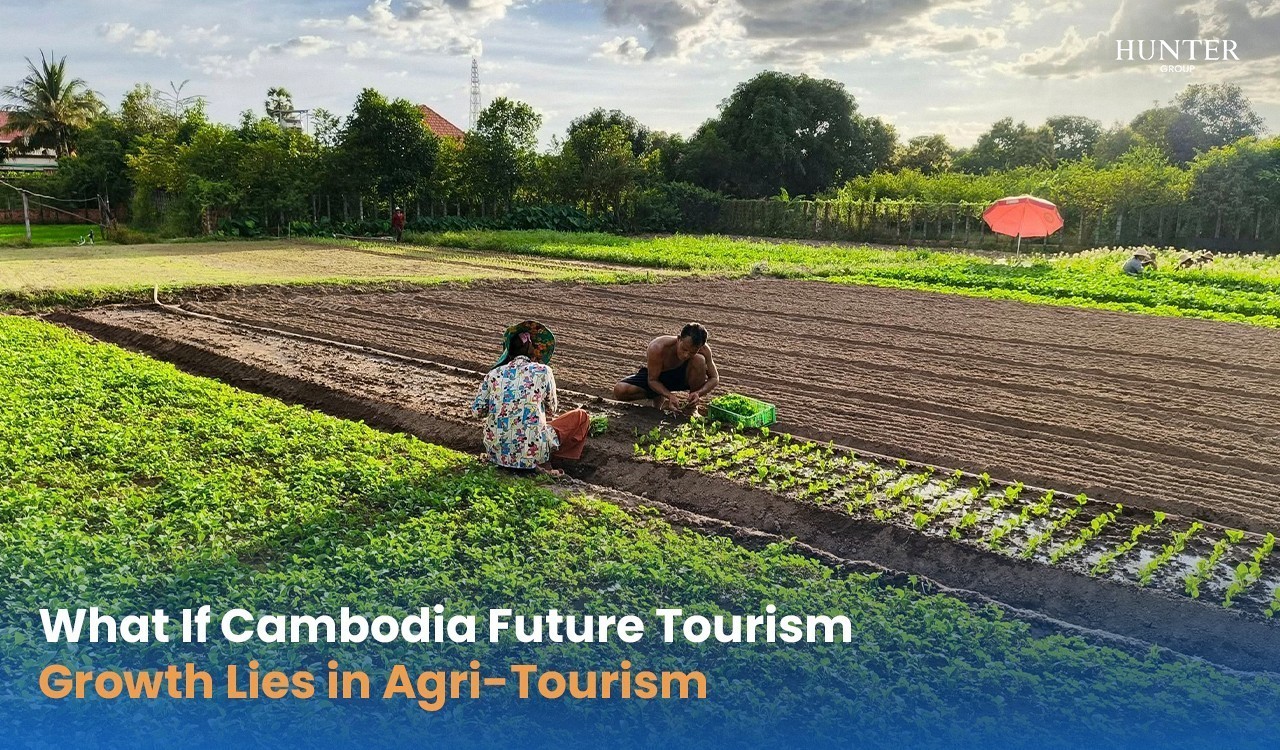Step inside almost any restaurant in Cambodia, and the first dish you’ll be recommended is Amok, the flavor of Cambodia. Its fragrant steam curls out from banana leaves, carrying the essence of Cambodian kitchens. But beyond its aroma and presentation, amok carries a deeper question: why has this dish come to symbolize an entire nation?
The answer isn’t just found in the receipt; it begins in Cambodia’s soil, in the agriculture that sustains both its people and its identity.
For decades, Siem Reap’s story has been told through temples. Millions visited each year, and the local economy rose and fell with the flow of tourism. But when the pandemic emptied the city, it forced a reckoning: what else can we offer the world?
The answer is emerging from the ground up, literally. Agri-tourism is beginning to transform how people experience Siem Reap, and how the city shapes its future.
Agri-Tourism isn’t Just a Trend, It’s a Shift in Travel
Many travelers are no longer just looking to sightsee; they are also seeking authentic experiences. Instead, they are seeking deeper and more meaningful experiences by connecting with the locals and their culture. This shift is happening worldwide, according to the Zicasso Travel Trend Report 2025. Culturally immersive experiences are on the rise, particularly in Asia. Cooking classes, local food tours, and time spent in rural communities are becoming just as valuable as sightseeing.
Siem Reap, with its fertile land and rich cultural heritage, is perfectly positioned to meet this increasing demand. Tourists can cycle through rice fields, harvest vegetables for a farm-to-table meal or stay in eco-lodges surrounded by farmland. These are not side trips anymore. They are experiences that visitors are actively searching for.
Agro-culture is Taking Shape, But the Experience Has Been Here Longer
In Chreav village, ox-carts rumble along dirt paths, carrying visitors across rice fields while locals share stories of rural life. This is Agro-Tourism Cambodia, a community-led initiative founded in 2013 to showcase authentic Cambodian traditions while creating new income streams for residents.
Here, tourists can fish in ponds, walk village trails, visit vegetable farms, or join cooking classes. Homestays range from $8 to $18 per night, with some upgraded to include swimming pools or air-conditioning—tailored to visitors’ preferences.
In just two years, the number of oxcarts has grown from eight to twelve, a sign of rising demand for immersive cultural experiences. For villagers, it means opportunity. Families now earn additional income beyond farming, creating resilience and reducing reliance on seasonal harvests.
2025 Brings Momentum, but the Industry Is Still Young
Agri-tourism is not just a cultural shift—it’s an economic one. According to a recent CBRE report, more than $130 million in agro-industrial investment has already flowed into Siem Reap. Yet compared to regional neighbors, Cambodia is still at an early stage.
- Vietnam has turned entire provinces into farm-to-table hubs, with agricultural exports reaching $11.6 billion.
- Indonesia now counts more than 4,000 registered community-based tourism villages.
By contrast, Siem Reap’s agri-tourism infrastructure is just beginning to take shape. Supply chains linking farms to hotels, eco-lodges in rural landscapes, and culinary hubs connecting food with culture remain underdeveloped.
That gap signals opportunity. For investors, Siem Reap offers a rare first-mover advantage—allowing early entrants to shape the industry, build partnerships with local communities, access untapped markets, and potentially establish leading brands as the sector grows. Potential entry points include:
- Partnerships with community farms and villages
- Development of eco-lodges and boutique rural resorts
- Culinary schools and experiential tourism hubs
- Export ventures in organic rice, palm sugar, and tropical produce
Demand is rising, supply is limited, and the momentum is just beginning.
Local Government is Cultivating Agri-culture Too
The Cambodian government has identified community-based tourism as a national priority, supporting model villages like Preah Dak. Once known primarily for its palm rice cakes, Preah Dak has now become a growing homestay hub as some areas are beginning to be urbanized.
It shows how cultural heritage, when paired with supportive policy, can evolve into a sustainable business.
Agri-tourism also creates ripple effects beyond economics:
- It keeps younger generations engaged in rural livelihoods.
- It preserves traditional farming practices.
- It reduces overdependence on temple tourism.
- It aligns Cambodia with the global shift toward responsible, sustainable travel.
The Road Ahead Is Long and Full of Promise
Siem Reap inspired the world with its ancient temples; now it invites travelers to discover its land and people for deeper, more memorable journeys.
For investors, it means entering a sector where tradition blends with growth, supported by rising demand, favorable government policy, and a city determined to reinvent itself. Early action may result in a strong market presence, attractive partnerships, and a role in shaping an emerging industry.
Beyond temples, Siem Reap is planting the seeds of a new future, and the opportunity is there for those ready to grow with it.
By Kem Sreyneth
Project Marketing & Communication
